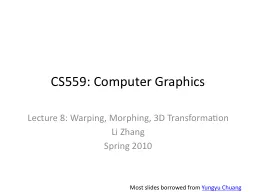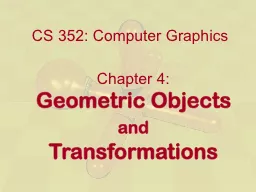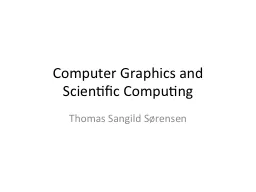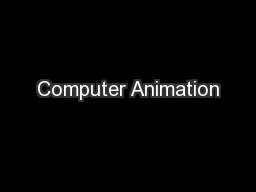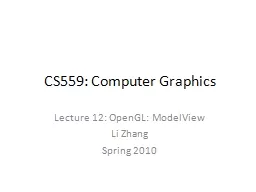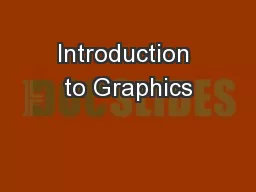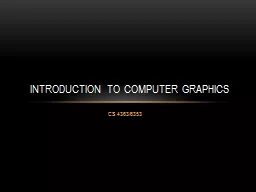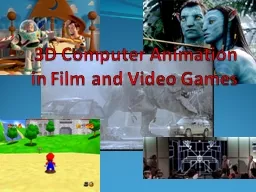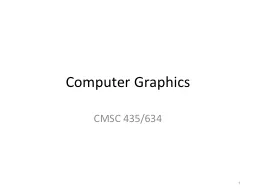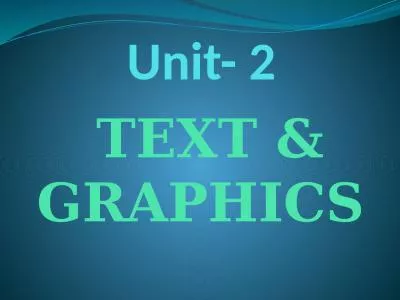PPT-CS559: Computer Graphics
Author : marina-yarberry | Published Date : 2016-08-10
Lecture 8 Warping Morphing 3D Transformation Li Zhang Spring 2010 Most slides borrowed from Yungyu Chuang Last time Forward warping fwarpI I T for y0 yltIheight
Presentation Embed Code
Download Presentation
Download Presentation The PPT/PDF document "CS559: Computer Graphics" is the property of its rightful owner. Permission is granted to download and print the materials on this website for personal, non-commercial use only, and to display it on your personal computer provided you do not modify the materials and that you retain all copyright notices contained in the materials. By downloading content from our website, you accept the terms of this agreement.
CS559: Computer Graphics: Transcript
Download Rules Of Document
"CS559: Computer Graphics"The content belongs to its owner. You may download and print it for personal use, without modification, and keep all copyright notices. By downloading, you agree to these terms.
Related Documents

